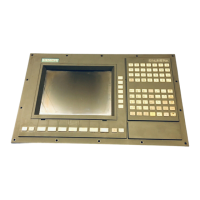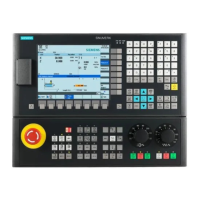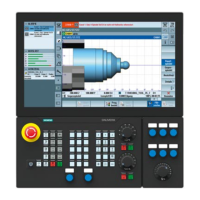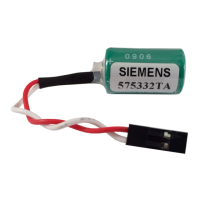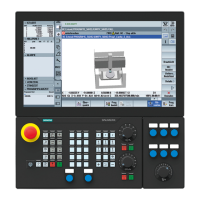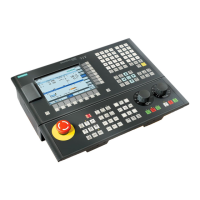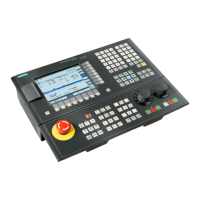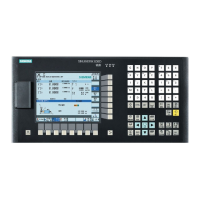9
08.97 Path Traversing Behavior
9.3 Curve tables
CTABDEF
CTABEND
CTAB
CTABINV
9
840D
NCU 571
840D
NCU 572
NCU 573
810D 840Di
Siemens AG 2000. All rights reserved
SINUMERIK 840D/840Di/810D/FM-NC Programming Guide Advanced (PGA) – 04.00 Edition
9-315
Reading table positions, CTAB, CTABINV
With CTAB you can read the following value for a
leading value directly from the part program or from
synchronized actions (Chapter 10).
With CTABINV, you can read the leading value for a
following value. This assignment does not always
have to be unique. CTABINV therefore requires an
approximate value (aproxLW) for the expected
leading value. CTABINV returns the leading value
that is closest to the approximate value. The
approximate value can be the leading value from the
previous interpolation cycle.
Following value
Leading
value
LW
FW
de
rees
Following value
Leading
value
LW
FW
de
rees
approx.
Both functions also output the gradient of the table
function at the correct position to the gradient
parameter (degrees). In this way, the you can
calculate the speed of the leading or following axis at
the corresponding position.
Additional notes
Optional specification of the leading or following axis
for CTAB/CTABINV is important if the leading and
following axes are configured in different length
units.
Deleting
curve tables,
CTABDEL
With CTABDEL you can delete the curve tables.
Curve tables that are active in a coupling cannot be
deleted.
Overwriting
curve tables
A curve table is overwritten as soon as is number is
used in another table definition. Active tables cannot
be overwritten.
Additional notes
No warning is output when you overwrite curve tables!

